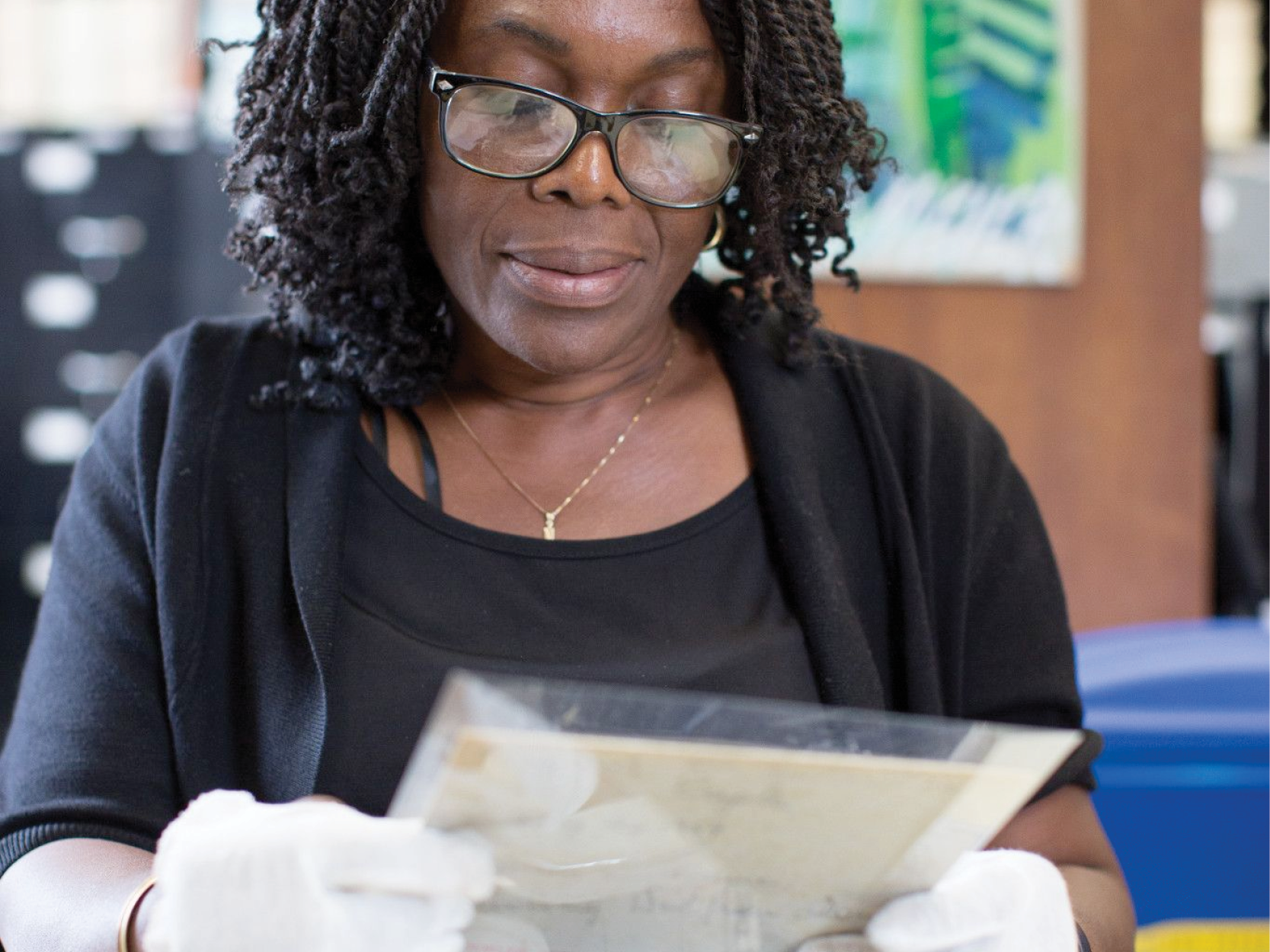
Josiah M. Grumman diary, 1973.110; Brooklyn Public Library, Center for Brooklyn History
A researcher wrote to me a few months back, seeking to fact check a piece of romantic Civil War hearsay. * He had heard of a promise made on the battlefield between two soldiers of Brooklyn’s 14th Regiment at the second battle of Bull Run in August, 1862. Quartermaster Sargeant Alexander Barnie Jr. was said to have vowed to the mortally wounded Lieutenant Josiah M. Grumman to marry and care for Grumman’s wife, Helen L. van Duyne Grumman, with whom Grumman had one son. Barnie was supposed to have done just that, marrying the widowed Helen after he returned from the war and fulfilling the promise to his friend. The possible key to tracing this story: a slim diary kept by Grumman from 1861 to 1862, now residing in the archives at the Center for Brooklyn History. Pursuing this question lead me through CBH’s archive, digital collections, and map collections, and gave a sense of the two men and their lives before, during, and after the war.
I pulled the diary and studied it for mention of Barnie, Helen, or any sign of Grumman’s injuries or death. Inside, I found the note, "Book kept by Lieutenant Josiah M. Grumman Co. H. 24th Regiment (Brooklyn), while a prisoner of war in Libby prison, Richmond, VA.” Grumman wrote an account of his capture, kept clippings from Confederate newspapers about the progress of the war, drew a map and small doodles, and, most importantly, listed the names, regiments, and conditions of fellow prisoners at Libby prison. Prisoners of war were able to send short letters. Grumman wrote at least one to his wife, urging her to have it published in the Brooklyn Daily Eagle with news of other prisoners and a message that they were “all in good spirits”. Libby prison frequently faced food shortages and overcrowding, but Grumman survived. His diary was kept in secret and smuggled out of the prison when he was released in a prisoner exchange. A February 6th 1898 article in the Eagle titled “The Diary of a Prisoner of War” describes the value of this record-keeping and affirms at least one part of the hearsay, that Grumman died at the second battle of Bull Run.

“First Lieutenant J. M. Grumman of Company H is one whose name deserves to be held in deep respect by every Union soldier, for many reasons, but especially for his valuable services while in prison at Richmond. He was one of the most popular officers in the Fourteenth and his bravery was a byword at the regiment. He was wounded at the first battle of Bull Run and taken prisoner by the rebels, who sent him to Richmond. During the time that he was detained as a prisoner of war, he not only kept an accurate diary of all that transpired, but he also obtained a complete list of the names of every Union soldier who was confined there. How he managed to do this without being detected is a matter which has always appeared to me to be deeply mysterious, but in some way or another he contrived to do it, and it was afterward proved that his records were more complete than those furnished to the government itself. He became as great a favorite among the members of the other regiments who were in confinement as he was among the officers and men of the Fourteenth, and when, not very long after his exchange, he was killed at the second battle of Bull Run, there were expressions of sorrow throughout the whole army.”
Reporting elsewhere suggests that Grumman, while injured at the second Bull Run, did not succumb to his wounds until ten days later. Neither his injuries nor any promises are mentioned in his diary. The only entry from 1862 appears to be a list of receipts.
The misreporting on Grumman’s death was not the only inaccuracy found in this research. Searching for Grumman in our newspapers led me on a detour to his life in the pre-war years, when he worked as a city surveyor and was embroiled in a map controversy that reflects on the reliability of documents in an archive.
The library is sometimes asked by those using our materials to research things like curb cuts or historic land use for court cases, to provide documentation stating that the research found in our library is accurate. CBH does not provide such guarantees. At best, in some cases we can verify that a book, map, or document is a part of our repository. All library and archival materials, even those with the air of authority, should be considered critically. For example—one of the earliest maps in CBH’s collection to illustrate Brooklyn after its 1855 consolidation with Williamsburgh and Bushwick is the 1856 Mathew Dripps map. This map would have been essential for residents to know and navigate the various wards, blocks and lots, names of landowners, ferry lines, piers, bulkhead lines, churches, and hospitals of their growing city. A subtitle on the map states that it was “Reduced from the authoritative maps on file and compiled and drawn by J.M. Grumman, City Surveyor.”

Dripps would forfeit $475 in May 1857 after losing a court case brought against him by Grumman. Grumman claims to have initially only sought credit for his work on the map. After Dripps made unapproved changes and omitted Grumman's name, Grumman sued for the value of his services. In today’s dollar, that amount would be almost $17,000. If Dripps paid such a high fee for removing Grumman’s name, why is his name on the map in our collection? Grumman, apparently, was asking the same question. In August of 1857, he took out the following one-week ad to excoriate the map:

“Map of Brooklyn—The undersigned whose name is attached to a map of Brooklyn, showing farm lines, &c, published by M. Dripps, Map Publisher, would respectfully inform his friends that he disclaims all connections with said map, and repudiates it entirely. The map as published is not engraved as drawn by me, and is full of errors; such as dimensions of blocks, names of streets, position of corner monuments, farm lines, &c, and showing streets opened where they are closed by law, and closed where the law has not closed them. J. M. Grumman, City Surveyor, 377 Fulton street.”
A sound condemnation. But not at all useful to the original research question.
I pursued further evidence of the promise in newspaper mentions of Barnie. Alexander Barnie Jr. was, according to his obituary, born June 17th, 1838 in Manhattan. Before the war he was a carpenter and builder who also worked in the office of the Adjutant General of the State of New York and at the State Arsenal. Unlike Grumman, who was a known entity in Brooklyn’s newspapers and entered the army as a sergeant, Barnie entered as a private and little was said about him before or during the war. It was in Barnie’s later life that he caught the Eagle’s eye, lifted from obscurity by his military service and continued involvement as the “popular Quartermaster of the Fourteenth Regiment”. Barnie’s obituary also provided this clue: “He married the widow of Lieut. Josiah M. Grumman, also a Fourteenth Regiment officer, who was wounded in both legs at the second battle of Bull Run. His wife was Helen Louise Van Dyne [sic], daughter of John Van Duyne, an early sheriff of Kings County.” Barnie, it seems, did marry Grumman’s widow, but the origins of their relationship remain murky. One possible sign of the two men’s closeness comes from biographical notes on their photos held at the New York State Military Museum; both men enlisted the same day, April 18th, 1861.
.jpg)
Josiah M. Grumman PA.1999.0014.0133

Alexander Barnie PA.1999.0014.0106
In his post-war life, Barnie was deeply involved in his veterans’ association, arranging campfires, erecting monuments, and holding balls. When his retirement was announced in 1892 with little fanfare from the adjutant general, an article in the Eagle appeared extolling his virtues. According to the article, it was not Barnie but his friends who were upset with the omission, as “Modesty is one of Lieutenant Barnie's many virtues”.
Another of Barnie’s virtues: loyalty and devotion to the memories of his friends. In 1905, a year far enough removed from the war that both sides could come together to congenially reminisce on mutually attempted murder, the Confederate General Fitzhugh Lee came to Brooklyn to give a talk. During this talk, “An incident of note, and which came as a great surprise, occurred […]”

“Major Alexander Barnie, a member of U.S. Grant Post No. 327, Brooklyn, got up from his seat in the rear of the room and when given the privilege of the floor asked General Lee if he was in command of the division that made the charge upon the Federal line near Falls Church, Virginia, in November 1861. General Lee had some difficulty at first in recalling the event, but Comrade Barnie helped him out with a few suggestions, among which was one that General Lee rode a bay horse on the occasion, the animal was shot from under him and the chaplain of the regiment, Chichester by name, who rode beside Lee, was killed. General Lee then recalled all the circumstances and was even able to supply details. Major Barnie then brought down the house by saying: "I married the widow of the man who shot your horse. His name was Lieutenant J. M. Grumman, of the Fourteenth Regular Infantry." Major Barnie and General Lee were then both able to recall that Lieutenant Grumman was taken prisoner after the incident.” (Emphasis mine.)
This enthusiasm (may I reiterate: “brought down the house”) for Grumman’s bravery and the mention of Helen in the same breath suggests at least a spiritual levirate marriage for these brothers in arms. The battlefield promise remains unsubstantiated. What of Helen Louise van Duyne, first Grumman and later Barnie? Little is currently known about her life, though one can hope it was a relatively happy one. Although she lost her evidently well-liked first husband to the brutal Civil War, he perhaps left her with the next best thing: an equally well-liked second husband.
*Permission was granted by the researcher to publicly discuss the topic.
This blog post reflects the opinions of the author and does not necessarily represent the views of Brooklyn Public Library.
Post a Comment
While BPL encourages an open forum, posts and comments are moderated by library staff. BPL reserves the right, within its sole discretion, not to post and to remove submissions or comments that are unlawful or violate this policy. While comments will not be edited by BPL personnel, a comment may be deleted if it violates our comment policy.
eNews Signup
Get the latest updates from BPL and be the first to know about new programs, author talks, exciting events and opportunities to support your local library.







